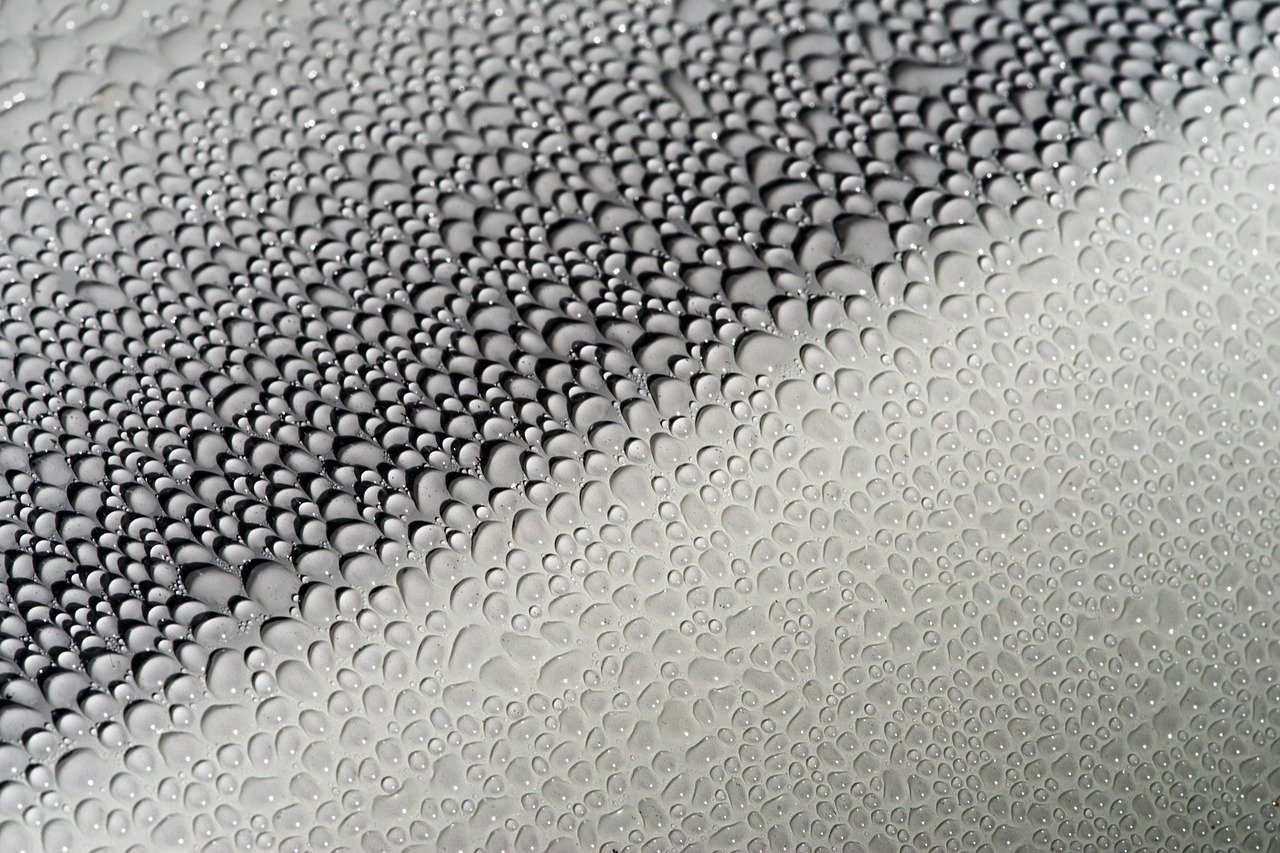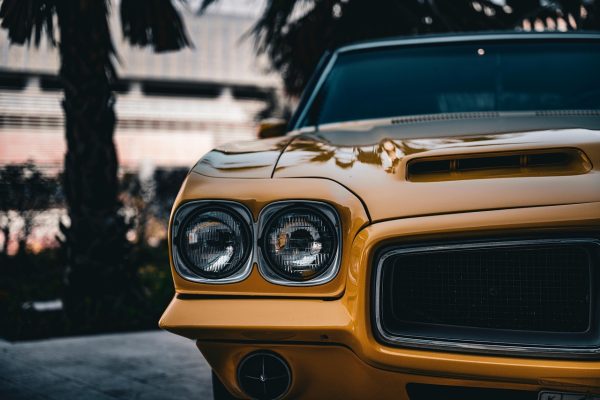
Water spots on your car can be stubborn, but they are easy to remove with the right approach. What you’ll want to do first is wash your car thoroughly with car soap and water to remove dirt and debris. After that, you’ll use a solution of equal parts white vinegar and water to tackle the water spots. Spray the mixture onto the affected areas, let it sit for a few minutes, and wipe it off with a clean microfiber cloth. For more stubborn spots, a clay bar or specialized water spot remover can be used to gently buff them away. For the final step, you’ll apply a coat of wax or sealant to protect your car’s paint and prevent future water spots.
What Causes Water Spots on a Car?
Water spots on a car are caused by minerals and impurities left behind when water evaporates. These spots often form when hard water, which contains high levels of minerals like calcium and magnesium, dries on the surface of your car. Rainwater can also cause spots if it mixes with dust, pollen, or pollution before drying. Sprinkler systems, car washes, or washing your car without drying it properly can also leave behind residue that creates these spots. Over time, water spots can etch into the paint, making them harder to remove and potentially damaging the car’s finish.
Does WD-40 Remove Water Spots from a Car?
Yes, WD-40 can help remove water spots from a car, but it should be used carefully. WD-40 is a lubricant that can break down the mineral deposits in water spots, making them easier to wipe away. To use it you spray a small amount on a microfiber cloth and gently rub the affected area. Afterward, you’ll want to wash the car with soap and water to remove any leftover residue from the WD-40. While it can be effective, it’s better to use products specifically designed for cars to protect the paint and finish.

How Can I Prevent Water Spots on a Car?
Preventing water spots on a car involves a few simple steps. What you should always do first is dry your car immediately after washing it using a clean microfiber towel or a drying chamois. Avoid parking under sprinklers or trees where water droplets can land on your car and leave spots. Using a quality wax or paint sealant provides a protective layer that repels water and reduces the chances of spots forming. You should also consider using filtered or distilled water for washing your car, as it contains fewer minerals that cause spots. Regular maintenance and protection will keep your car’s finish looking clean and spot-free.
How Severe Are Water Spots on a Car?
Water spots on a car may seem like a minor issue, but they can cause serious damage if not addressed. These spots form when water evaporates, leaving behind mineral deposits that can etch into the car’s paint over time. While light water spots are mostly a cosmetic problem, more severe spots, known as etched water spots, can permanently damage the clear coat and paint. If left untreated, this damage may require professional polishing or even repainting to fix. Regularly washing and drying your car, as well as applying wax or sealant can help prevent water spots from forming and protect the car’s surface.
What Is the Best Removal Method for Getting Water Spots Off a Car?
The best method to remove water spots from a car depends on their severity. For light water spots, a simple wash with car soap and a microfiber towel can often do the job. If the spots are more stubborn, using a mixture of water and white vinegar can help dissolve the mineral deposits. For etched water spots that have damaged the clear coat, a specialized water spot remover or a professional-grade polishing compound may be necessary. To prevent further damage, always test any product on a small, inconspicuous area first and follow up with a wax or sealant to protect the paint.

What Type of Water Should You Use When Washing a Car to Avoid Water Spots?
To avoid water spots when washing your car, it is best to use filtered or deionized water. Regular tap water often contains minerals like calcium and magnesium, which can leave behind residue when the water dries. Filtered or deionized water removes these impurities, reducing the risk of spots forming on the surface. Using a soft microfiber towel to dry the car immediately after washing can also further prevent water spots. By combining the right type of water with proper drying techniques, you can keep your car’s paint looking clean and spot-free.
Can Ceramic Coating Help Prevent Water Spots on a Car?
A ceramic coating can help reduce water spots on a car, but it won’t completely eliminate them. Ceramic coatings create a hydrophobic layer on the car’s surface, causing water to bead up and roll off more easily. This reduces the chances of water sitting on the paint and leaving mineral deposits behind. It’s important to remember that if water does dry on the surface, it can still leave spots, especially if the water contains a high level of minerals. While a ceramic coating provides added protection and makes cleaning easier, regular maintenance, such as washing and drying the car promptly, is still essential to fully prevent water spots.
What Is the Best Drying Technique to Prevent Water Spots on a Car?
The best drying technique to prevent water spots on a car involves using a clean, soft microfiber towel or a high-quality drying cloth. After washing you’ll want to gently pat or wipe the car’s surface to remove water without scratching the paint. For better results, you can use a car dryer or a leaf blower to blow water off, especially from hard-to-reach areas like mirrors and crevices. It’s also helpful to dry the car in the shade to prevent water from evaporating too quickly, which can leave spots. Applying a quick detailer spray or drying aid can further enhance the drying process by adding a protective layer and reducing streaks.
Can Car Detailers Remove Water Spots from a Car?
Yes, car detailers can effectively remove water spots from a car using professional tools and techniques. For minor spots, they may use a clay bar or water spot remover to lift mineral deposits from the surface. In cases where the water spots have etched into the clear coat, detailers typically use polishing compounds and machine buffers to restore the paint’s finish. They also apply protective products like wax or ceramic coatings after the treatment to help prevent future water spots. Hiring a professional detailer is a reliable option for restoring your car’s appearance, especially if the damage is severe or hard to address on your own.
What Are the Best Products to Use to Remove Water Spots from a Car?
The best products to remove water spots from a car depending on their severity. For light water spots, a simple mixture of white vinegar and water can effectively dissolve mineral deposits. Commercial water spot removers, specifically designed for automotive use, are also highly effective and safe for your car’s paint. For more stubborn or etched spots, using a polishing compound or rubbing compound can help restore the surface. Clay bars are also useful for removing embedded contaminants, while products like detail sprays or sealants can be applied afterward to protect the paint. Always follow product instructions and test in a small area before full application.
What Is the Best Professional Product to Remove Water Spots from a Car?
The best professional product to remove water spots from a car is typically a specialized water spot remover or a polishing compound. Products like “Meguiar’s Water Spot Remover” and “Chemical Guys Water Spot Remover” are designed specifically to break down and remove mineral deposits without damaging the car’s paint. For more stubborn or etched spots, a professional-grade polishing compound, such as “3M Perfect-It” or “Menzerna Heavy Cut Compound,” can help restore the paint’s shine. These products are safe to use on automotive surfaces and are often applied by car detailers with the right tools. After removing the water spots, detailers usually apply a protective layer, such as wax or a ceramic coating, to prevent future spots from forming.
Is Hiring a Professional Car Detailer to Remove Water Spots from a Car Efficient?
Yes, hiring a professional car detailer to remove water spots is an efficient solution, especially for severe or etched spots. Detailers are trained to assess the condition of your car’s paint and use the appropriate techniques to safely and effectively remove water spots. They often use specialized tools, such as polishing machines and professional-grade water spot removers, to restore the car’s finish. Detailers can also apply protective coatings, like wax or ceramic coatings, to help prevent future water spots. While the service may cost more than doing it yourself, it saves time and ensures high-quality results that may not be achievable with at-home methods.
Can Rain Cause Water Spots on a Car?
Yes, rain can cause water spots on a car. When rainwater falls on the car, it often contains minerals like calcium and magnesium, which can leave behind deposits when the water evaporates. If the car is not dried quickly after the rain, these minerals can form visible spots on the surface. While light rain might not cause noticeable damage, repeated exposure to these mineral deposits can lead to etched water spots, especially if the car sits in the sun for a long time after getting wet. To prevent this, it’s important to dry the car as soon as possible after it rains or use a protective coating like wax or ceramic sealant to reduce the risk of water spots.
How Do I Keep a Car Protected from Damage to Its Appearance?
To keep a car protected from damage to its appearance, regular maintenance and preventive care are key. Washing the car frequently with a gentle, pH-balanced car soap helps remove dirt, grime, and road salts that can damage the paint. Applying a layer of wax or a ceramic coating adds a protective barrier against environmental elements like rain, dirt, and UV rays. Parking in shaded areas or using a car cover can protect the paint from sun damage and bird droppings. Keeping the car dry after washing and using microfiber towels to avoid scratches can also help maintain the car’s appearance for longer. Regularly checking for small chips or scratches and addressing them early can also prevent further damage.
Understanding Water Spots on a Car
Water spots on a car are a common issue that can affect its appearance if not dealt with properly. These spots form when water evaporates from the surface of the car, leaving behind minerals like calcium and magnesium. If the water contains high levels of these minerals, the spots can become more noticeable and difficult to remove. While light water spots may only be a cosmetic problem, more severe spots can etch into the car’s paint, causing permanent damage. It is essential to address water spots as soon as they appear to prevent long-term harm to the vehicle. Regular washing and drying of the car can help reduce the chances of water spots forming. Using a microfiber towel or a car dryer to quickly dry the car after it gets wet is an effective way to prevent water from drying on the surface. Applying a protective coating, such as wax or ceramic sealant, can also help repel water and reduce the risk of spots forming in the future. If the water spots become stubborn or etched, professional products like water spot removers or polishing compounds can restore the car’s finish. By taking preventive measures and addressing water spots promptly, you can keep your car looking clean and well-maintained.

